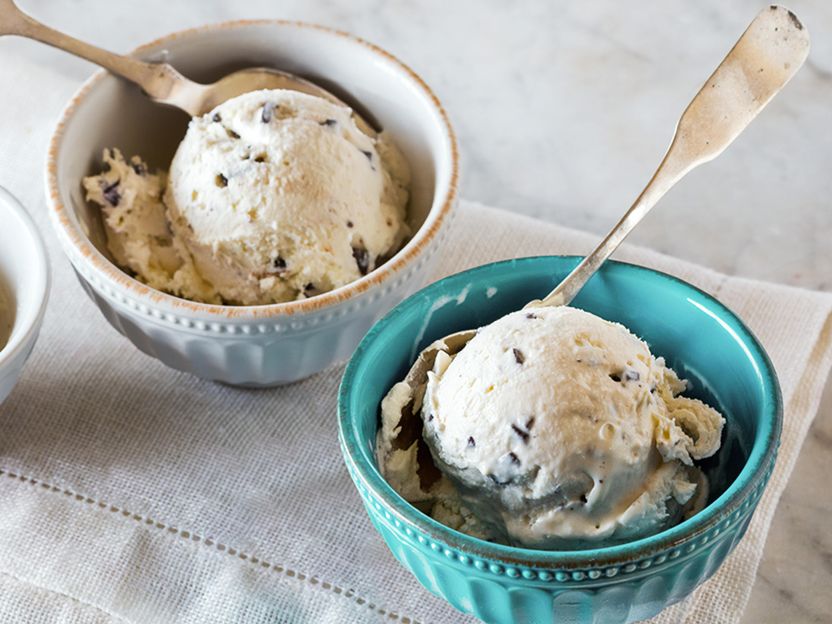The rise of permissible indulgence and frozen snacking
Historically, products that tout diet-specific benefits (low calorie, fat, sugar, carbs etc.) yet sacrifice taste, were the standard, in order to live a so-called “healthy lifestyle.” According to Mintel research, 78% of consumers believe snacking can be a part of a healthy diet and 69% want snacks that balance health and taste. Enter permissible indulgence. Better taste combined with better-for-you attributes, and none of the guilt.

Photo by American Heritage Chocolate on Unsplash
Defining ‘Permissible Indulgence’
Over the last few years, consumers’ definition of snacking has evolved, expanding the consideration set of options and occasions, only accelerated by COVID-19. Consumers are snacking often and frequently throughout the day and expanding snacking day parts.
Based on Mintel consumer research, 38% of frozen novelty consumers say they are snacking more often than before the pandemic, with 59% reporting this is due to being at home more often. Findings also noted that 51% are snacking because they are treating themselves more often, and 50% are snacking as an added comfort.
As snacking occasions broaden, consumers are torn between indulgent comfort foods and health aspirations. According to Mintel consumer data, three out of four consumers look for options that are both healthy and taste great, but very few (39%) are willing to sacrifice taste for a healthier option. When choosing a snack to eat, “taste”, “flavor” and “satisfying a craving” out-rank “health,” in terms of importance.
As the definition of snacking has widened, frozen snacking has entered the consideration set in a big way. According to Mintel research, in the last six months, 59% of consumers say they purchase frozen desserts as a snack while existing in the consideration set of traditional snacks (i.e., crackers, chips, pretzels, fruits, vegetables).
As frozen snacks are becoming more permissible through form and ingredients, snacks are adding a sense of indulgence to balance out their more permissible, health-oriented attributes.
The evolution of frozen treats to frozen snacks
Frozen treats are blurring the line between dessert and snack, and more consumers are looking to frozen treats to satisfy their snack needs. Due to changes in behaviors formed during COVID-19, and more access to the freezer at home, frozen treats are no longer solely confined to the late evening/night time after dinner occasion, and in consumer’s minds, have likely evolved from frozen treats to frozen snacks. Consumers are now eating frozen novelties in the early afternoon, late afternoon, and some in the late-AM, along within the evening. And, 62% of consumers snack on frozen yogurt bars and 50% on frozen ice cream bars, at least a few times a week.
Frozen desserts have proliferated the snack space and are now considered acceptable snack replacements in a wide variety of consumer occasions.
The frozen snacking category is growing
Frozen snacking is experiencing a surge in demand as the frozen novelties category meets consumer demand for permissible indulgence within snacking. The frozen novelties market alone reached $6 billion as of June 2021 in the multi-outlet (MULO) channel, growing 13.5% in the past year versus the $7 billion ice cream market growing only 3%. Traditional frozen novelty brands like Magnum and Nestle and better-for-you brands like Yasso and My Mochi have seen increased growth across novelties, outpacing other ice-cream formats.
Successful permissible indulgence brands
Brands with strong permissible indulgence strategies like Outshine and Yasso are breaking through within the crowded frozen treat category.
Mintel consumer data shows, both Yasso and Outshine outperform diet-related brands (Halo Top, Enlightened, Rebel) and traditional ice cream brands (Ben & Jerry’s, Haagen-Dazs) on permissibility attributes. Looking at the snack category, brands like KIND have successfully shown that dialing up the indulgence in healthier products yields better results and performs better with consumers.
What Mintel thinks
Consumer tastes have evolved and broadened the snacking space, and the brands that are meeting and exceeding expectations deliver on both taste and health.
Permissible indulgence is growing in demand and substantial opportunities exist for frozen snacks to fill the void. And, opportunities lie ahead to extend into even more day parts, to address the needs of a wide range of consumers looking to balance health and taste, a trend that has been led by brands like Kind, Outshine, Yasso, and Sabra.





























































